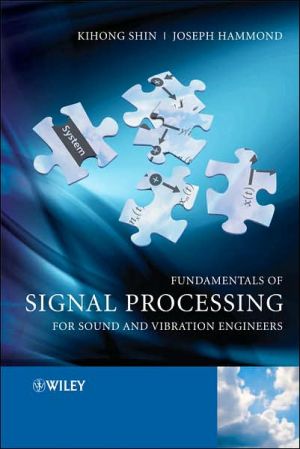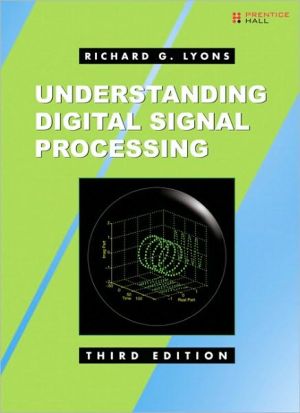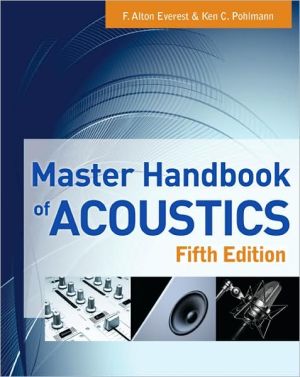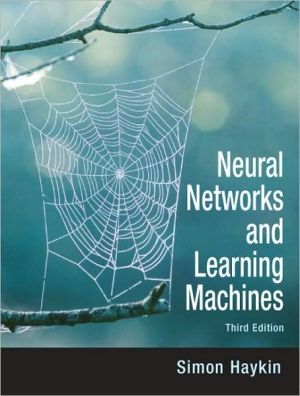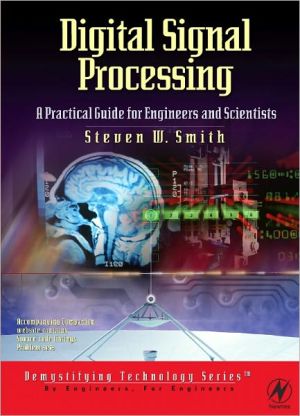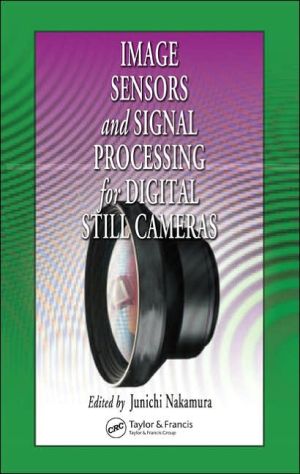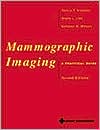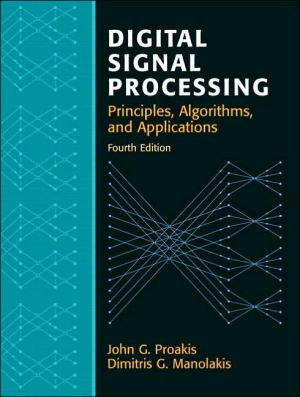Fundamentals of Signal Processing for Sound and Vibration Engineers
Fundamentals of Signal Processing for Sound and Vibration Engineers is based on Joe Hammond’s many years of teaching experience at the Institute of Sound and Vibration Research, University of Southampton. Whilst the applications presented emphasise sound and vibration, the book focusses on the basic essentials of signal processing that ensures its appeal as a reference text to students and practitioners in all areas of mechanical, automotive, aerospace and civil engineering. \ \ Offers...
Search in google:
Fundamentals of Signal Processing for Sound and Vibration Engineers Author: Kihong Shin and Joseph K. Hammond Fundamentals of Signal Processing for Sound and Vibration Engineers is based on Joe Hammond’s many years of teaching experience at the Institute of Sound and Vibration Research, University of Southampton. Whilst the applications presented emphasise sound and vibration, the book focusses on the basic essentials of signal processing that ensures its appeal as a reference text to students and practitioners in all areas of mechanical, automotive, aerospace and civil engineering. Offers an excellent introduction to signal processing for students and professionals in the sound and vibration engineering field. Split into two parts, covering deterministic signals then random signals, and offering a clear explanation of their theory and application together with appropriate MATLAB examples. Provides an excellent study tool for those new to the field of signal processing. Integrates topics within continuous, discrete, deterministic and random signals to facilitate better understanding of the topic as a whole. Illustrated with MATLAB examples, some using ‘real’ measured data, as well as fifty MATLAB codes on an accompanying website.
Preface ixAbout the Authors xiIntroduction to Signal Processing 1Descriptions of Physical Data (Signals) 6Classification of Data 7Deterministic Signals 17Classification of Deterministic Data 19Periodic Signals 19Almost Periodic Signals 21Transient Signals 24Brief Summary and Concluding Remarks 24MATLAB Examples 26Fourier Series 31Periodic Signals and Fourier Series 31The Delta Function 38Fourier Series and the Delta Function 41The Complex Form of the Fourier Series 42Spectra 43Some Computational Considerations 46Brief Summary 52MATLAB Examples 52Fourier Integrals (Fourier Transform) and Continuous-Time Linear Systems 57The Fourier Integral 57Energy Spectra 61Some Examples of Fourier Transforms 62Properties of Fourier Transforms 67The Importance of Phase 71Echoes 72Continuous-TimeLinear Time-Invariant Systems and Convolution 73Group Delay (Dispersion) 82Minimum and Non-Minimum Phase Systems 85The Hilbert Transform 90The Effect of Data Truncation (Windowing) 94Brief Summary 102MATLAB Examples 103Time Sampling and Aliasing 119The Fourier Transform of an Ideal Sampled Signal 119Aliasing and Anti-Aliasing Filters 126Analogue-to-Digital Conversion and Dynamic Range 131Some Other Considerations in Signal Acquisition 134Shannon's Sampling Theorem (Signal Reconstruction) 137Brief Summary 139MATLAB Examples 140The Discrete Fourier Transform 145Sequences and Linear Filters 145Frequency Domain Representation of Discrete Systems and Signals 150The Discrete Fourier Transform 153Properties of the DFT 160Convolution of Periodic Sequences 162The Fast Fourier Transform 164Brief Summary 166MATLAB Examples 170Introduction to Random Processes 191Random Processes 193Basic Probability Theory 193Random Variables and Probability Distributions 198Expectations of Functions of a Random Variable 202Brief Summary 211MATLAB Examples 212Stochastic Processes; Correlation Functions and Spectra 219Probability Distribution Associated with a Stochastic Process 220Moments of a Stochastic Process 222Stationarity 224The Second Moments of a Stochastic Process; Covariance (Correlation) Functions 225Ergodicity and Time Averages 229Examples 232Spectra 242Brief Summary 251MATLAB Examples 253Linear System Response to Random Inputs: System Identification 277Single-Input Single-Output Systems 277The Ordinary Coherence Function 284System Identification 287Brief Summary 297MATLAB Examples 298Estimation Methods and Statistical Considerations 317Estimator Errors and Accuracy 317Mean Value and Mean Square Value 320Correlation and Covariance Functions 323Power Spectral Density Function 327Cross-spectral Density Function 347Coherence Function 349Frequency Response Function 350Brief Summary 352MATLAB Examples 354Multiple-Input/Response Systems 363Description of Multiple-Input, Multiple-Output (MIMO) Systems 363Residual Random Variables, Partial and Multiple Coherence Functions 364Principal Component Analysis 370Proof of [characters not reproducible] 375Proof of [characters not reproducible] 379Wave Number Spectra and an Application 381Some Comments on the Ordinary Coherence Function [gamma superscript 2 subscript xy](f) 385Least Squares Optimization: Complex-Valued Problem 387Proof of H[subscript W](f) to H[subscript 1](f) as [kappa](f) to [infinity] 389Justification of the Joint Gaussianity of X(f) 391Some Comments on Digital Filtering 393References 395Index 399
